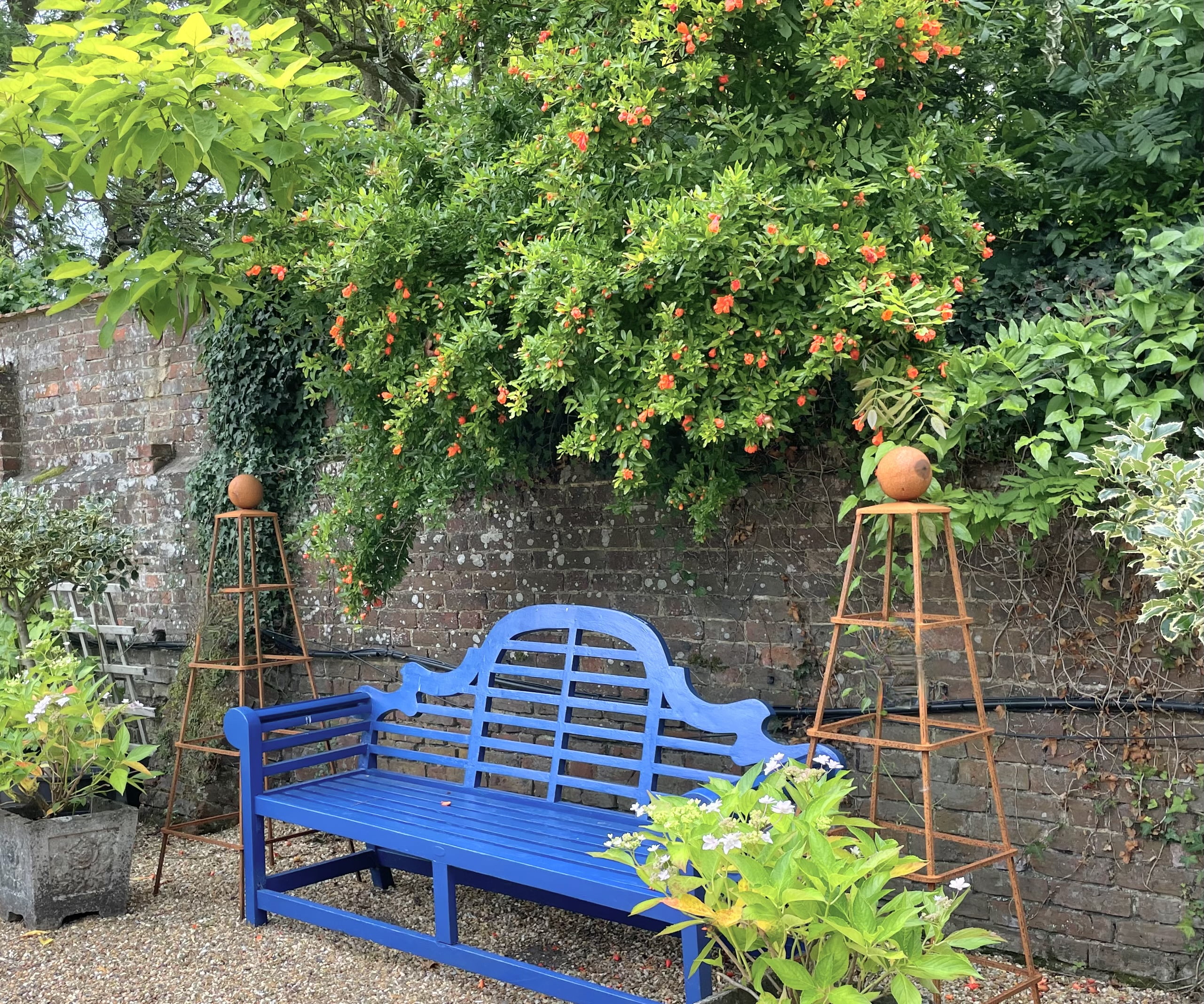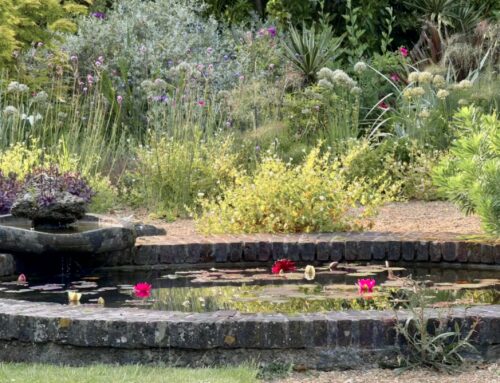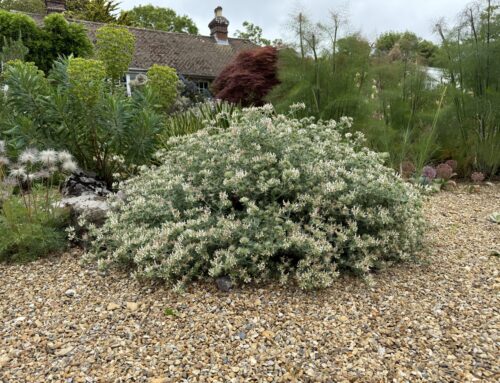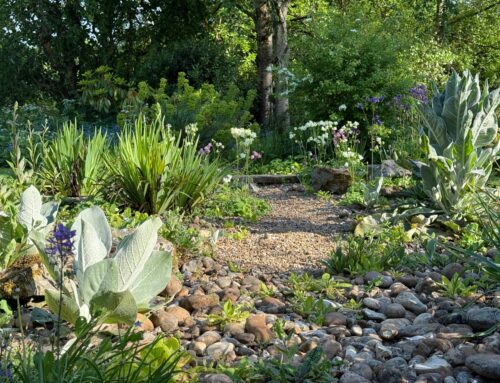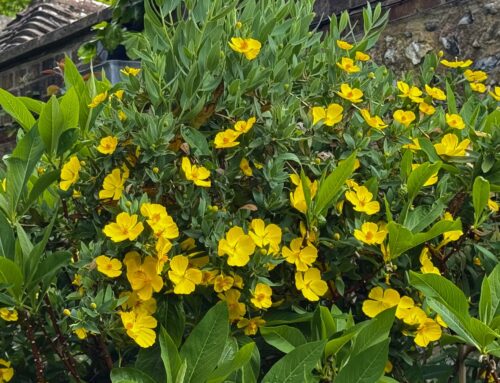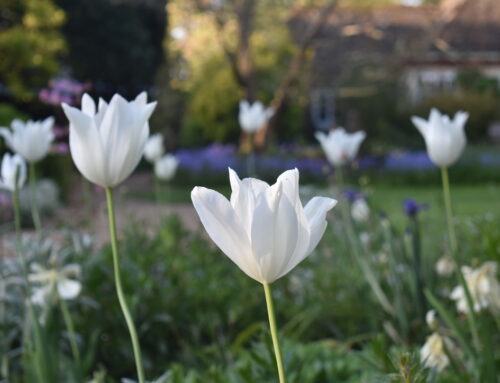Above: Mrs Robinson’s pomegranate tree hangs over the eight-foot brick wall that forms the north border of the Walled Garden.
We don’t know when Joyce Robinson planted her pomegranate tree (Punica granatum) but we think it must at least 40 years ago, before she published Glorious Disarray, her 1989 book about Denmans.
In it she writes ‘In late August there will be pomegranate fruits on the south wall’ so it is probable her tree was at least a few years old at the time she wrote those words as Punica take at least 2-3 years to bear their first fruits after planting.
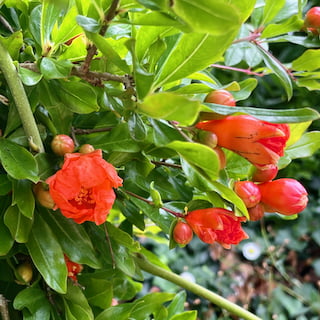
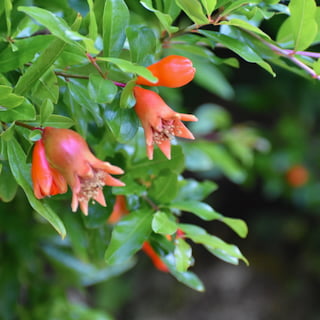
It has always been a beautiful tree, but it is especially so this year. Its flower buds, which hang over the eight-foot wall above one of John Brookes’ iconic blue benches, began forming in June and opening slowly in early July.
Now, at the beginning of August, it is covered in hundreds of deep orange funnel-shaped blossoms that will soon begin to morph into the large, red, waxy berries (yes, pomegranates are berries – like bananas and aubergines!) that contain the fleshy seeds used in a broad variety of recipes from salads to meat dishes and even cocktails. The word ‘pomegranate’ actually comes from the medieval Latin term “pomum granatum,” meaning apple of many grains or seeds.
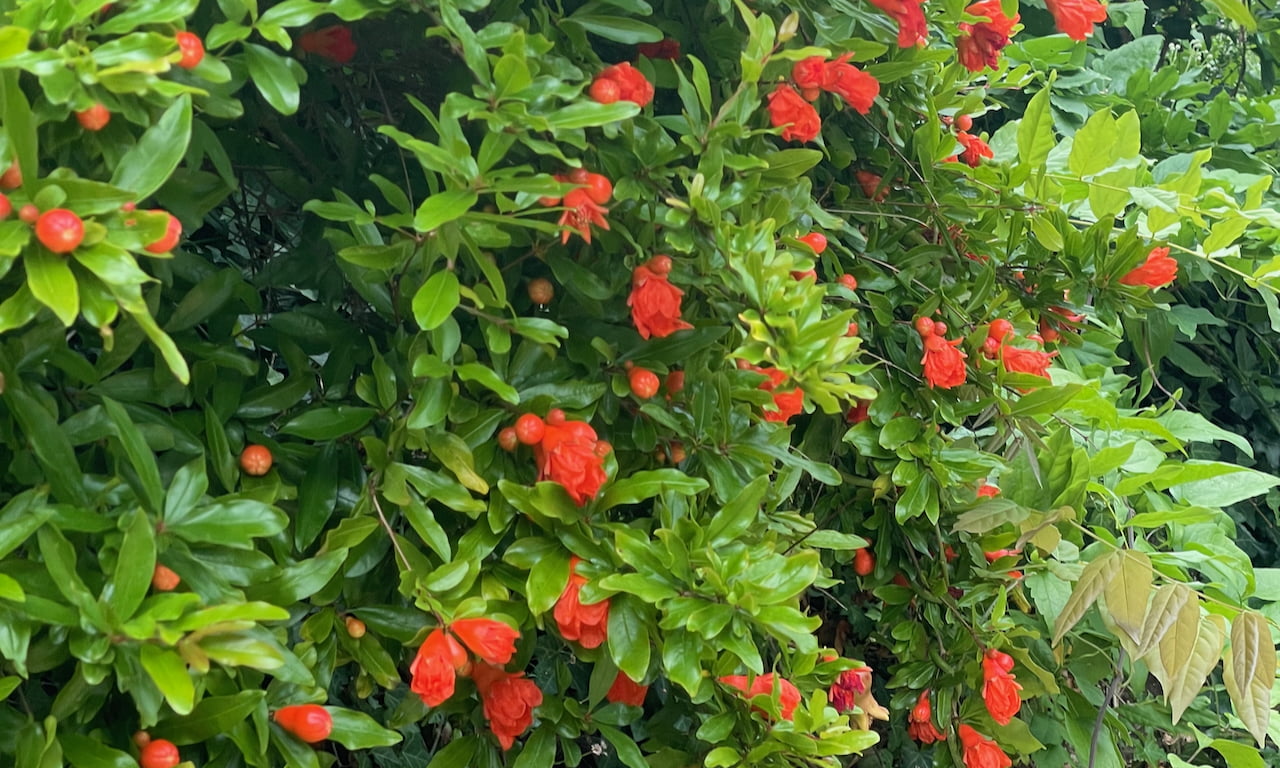
The fruits will continue to swell and redden through the Autumn months and then will become a deep, rich brown and will persist all winter, adding a unique bit of winter interest. Although we have picked them in past years, they do not seem to ripen enough to eat so we leave them on the tree.
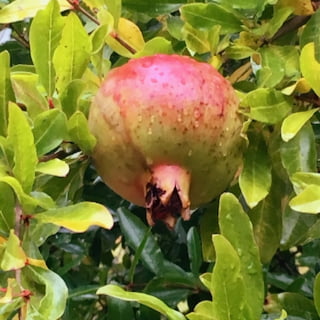
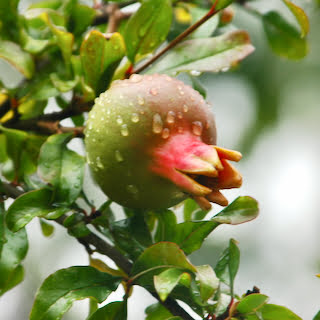
Native from the eastern Mediterranean to the Himalayas deciduous Punica are hardy in coastal and relatively mild areas of the UK where temperatures do not fall below -5C so they do best in a sheltered spot that faces south. Some varieties available may be even hardier and can be grown in pots. They prefer well-drained soil and are drought resistant, so the Walled Garden here is an ideal location.

